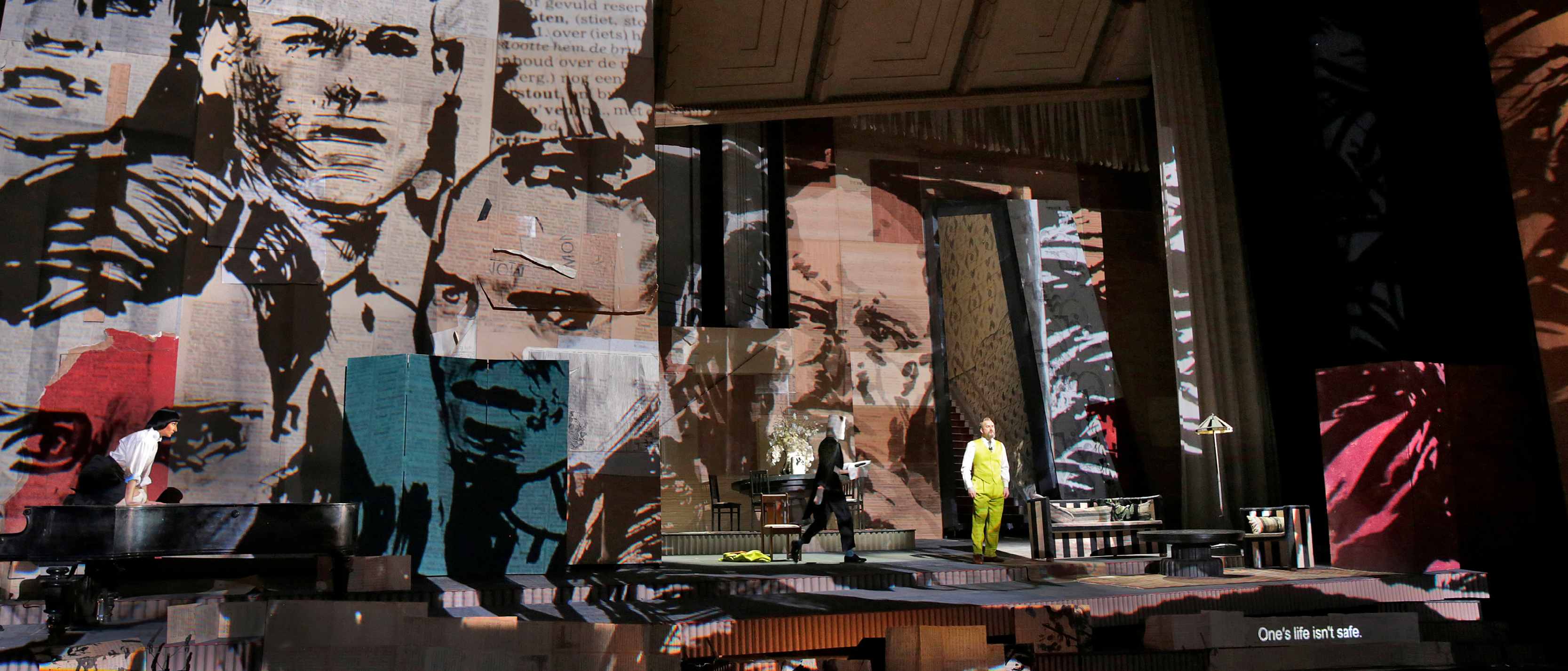
Operatic Symmetries
Like much of Berg’s other music, the score of Lulu is built on an unrelentingly precise formal plan. The opera’s overall structure is shaped like an arc, with the rise and fall of the arc each corresponding to one of the Wedekind plays on which the libretto is based. The first half of the opera (from Wedekind’s Earth Spirit) tells the story of Lulu’s rise to the top of society. The second half (corresponding to Pandora’s Box) concerns her downfall and squalid end at the hands of Jack the Ripper.
At the opera’s midpoint, halfway through the second act, Berg inserted an orchestral interlude to accompany a silent film depicting Lulu’s arrest, trial, imprisonment, sickness from cholera, hospitalization, and liberation. This episode represents the dramatic turning point of the opera, and the interlude’s musical structure reflects the arc shape of the opera’s narrative: It is a compositional palindrome, with the music running backwards after the mid-point.
Berg also bolstered the dramatic symmetry of the opera through a unique kind of double casting, with certain performers reappearing in different roles. The Physician, Lulu’s first husband, also plays the silent role of the Professor; the Painter also plays the African Prince; and Dr. Schön returns as Jack the Ripper. While role doubling is common in theatrical productions, it is usually employed as a cost-saving measure. In this case, Berg’s casting is entirely purposeful, demonstrating an essential connection between Lulu’s husbands and her clients as a prostitute later in the story. This connection is made more explicit by the fact that the doubled roles share music between their initial appearances and their returns later in the opera. In a letter to his former teacher, Arnold Schoenberg, Berg wrote: “[The] men who visit Lulu in her attic [in Act III] have to be represented in the opera by those singers who have represented the men who become Lulu’s victims in the first half of the opera—in inverted order of appearance, to be sure.”
Critical Inquiry
Think about the double casting in Berg’s opera: What similarities between these characters might Berg want us to find? How do these similarities impact our understanding of Lulu and her rise and fall?